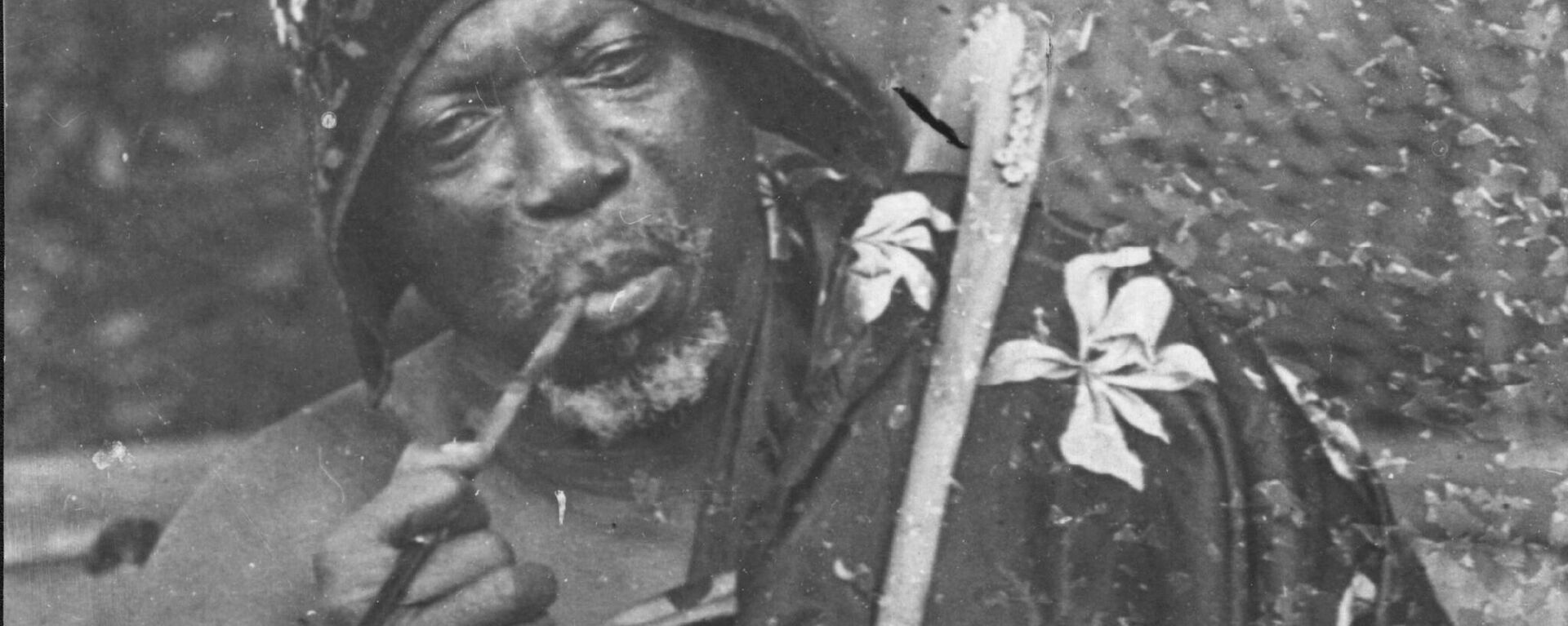https://en.sputniknews.africa/20241223/can-thief-tell-you-what-to-do-african-expert-on-restitution-of-looted-african-artifacts-1069855732.html
'Can Thief Tell You What to Do?' African Expert on Restitution of Looted African Artifacts
'Can Thief Tell You What to Do?' African Expert on Restitution of Looted African Artifacts
Sputnik Africa
Recently, Benin succeeded in removing from a Paris auction the symbols of power that belonged to King Behanzin of Dahomey and were taken from Africa to France... 23.12.2024, Sputnik Africa
2024-12-23T15:41+0100
2024-12-23T15:41+0100
2024-12-23T15:56+0100
opinion
zimbabwe
africa
senegal
benin
benin bronzes
history
colonialism
british colonialism
neocolonialism
https://cdn1.img.sputniknews.africa/img/07e8/0c/17/1069855909_0:0:2755:1551_1920x0_80_0_0_a7e39e801fdbcc691b7af45bc6cffdfb.jpg
Dr. Rudo Sithole, Founding Director of African Museums and Heritage Restitution in Harare, Zimbabwe, has challenged the Western narrative that African nations lack the capacity to care for returned artifacts.Speaking in an interview with Sputnik, Dr. Sithole emphasized that the return of artifacts looted during colonial times requires a comprehensive approach beyond simple repatriation.Dr. Sithole outlined a five-stage process for proper restitution:Further, she argued that apologies and other symbolic acts of reconciliation are essential parts of the process.Dr. Sithole countered the argument of insufficient infrastructure by highlighting the significant advancements in African museum development. She cited the Museum of Black Civilizations in Dakar, Senegal, as an example of a facility well-equipped to handle restituted materials, along with other recently constructed museums specifically designed for repatriated artifacts.
https://en.sputniknews.africa/20241222/insignia-of-the-kingdom-of-dahomey-removed-from-paris-auction-at-benins-request-1069845341.html
zimbabwe
africa
senegal
benin
Sputnik Africa
feedback@sputniknews.com
+74956456601
MIA „Rossiya Segodnya“
2024
Muhammad Nooh Osman
https://cdn1.img.sputniknews.africa/img/07e7/04/0a/1058467512_0:0:1280:1280_100x100_80_0_0_ec723833bcbfcaed2e21952965ad99e4.jpg
Muhammad Nooh Osman
https://cdn1.img.sputniknews.africa/img/07e7/04/0a/1058467512_0:0:1280:1280_100x100_80_0_0_ec723833bcbfcaed2e21952965ad99e4.jpg
News
en_EN
Sputnik Africa
feedback@sputniknews.com
+74956456601
MIA „Rossiya Segodnya“
Sputnik Africa
feedback@sputniknews.com
+74956456601
MIA „Rossiya Segodnya“
Muhammad Nooh Osman
https://cdn1.img.sputniknews.africa/img/07e7/04/0a/1058467512_0:0:1280:1280_100x100_80_0_0_ec723833bcbfcaed2e21952965ad99e4.jpg
zimbabwe, africa, senegal, benin, benin bronzes, history, colonialism, british colonialism, neocolonialism, artifact, culture, museums, africa insight
zimbabwe, africa, senegal, benin, benin bronzes, history, colonialism, british colonialism, neocolonialism, artifact, culture, museums, africa insight
'Can Thief Tell You What to Do?' African Expert on Restitution of Looted African Artifacts
15:41 23.12.2024 (Updated: 15:56 23.12.2024) Muhammad Nooh Osman
Writer/Editor
Recently, Benin succeeded in removing from a Paris auction the symbols of power that belonged to King Behanzin of Dahomey and were taken from Africa to France over 130 years ago. The authorities of Benin demanded from the auction organizers not to sell relics of Dahomey, which was located in West Africa on the current territory of Benin and Togo.
Dr. Rudo Sithole, Founding Director of African Museums and Heritage Restitution in Harare, Zimbabwe, has challenged the Western narrative that African nations lack the capacity to care for
returned artifacts.
Speaking in an interview with Sputnik, Dr. Sithole emphasized that the return of artifacts looted during colonial times requires a comprehensive approach beyond simple repatriation.
"Proper restitution has got five stages […] So, it's a complete full package, and the five things are complementary," she noted.
Dr. Sithole outlined a five-stage process for proper restitution:
return of the artifacts (restitution or repatriation),
compensation for the theft,
rehabilitation of cultural heritage institutions,
measures to satisfy the affected communities,
and guarantees against future looting.
"When they say that Africa doesn't have the proper museum to take care of them, they should bring these things back in a reparative model, which includes compensation and rehabilitation. Rehabilitation even includes building new museums, building the capacity of our staff, the holistic care reparations," she argued.
Further, she argued that apologies and other symbolic
acts of reconciliation are essential parts of the process.
Dr. Sithole countered the argument of insufficient infrastructure by highlighting the significant advancements in African museum development. She cited the Museum of Black Civilizations in Dakar, Senegal, as an example of a facility well-equipped to handle restituted materials, along with other recently constructed museums specifically designed for repatriated artifacts.



